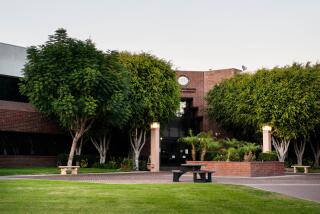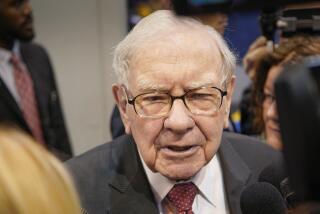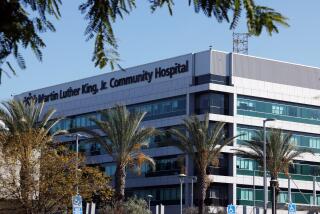Size of Bequest Elates Hospital
When it was announced in October that Memorial Hospital of Glendale had been named benefactor in the will of longtime Glendale resident Edith Homan, hospital officials said they were pleasantly surprised, even though the amount was unspecified.
But, when the the size of the legacy was revealed last month, administrators were amazed.
Homan left the hospital $1 million, the largest donation the 58-year-old institution had ever received.
Officials were at a loss to explain Homan’s motive, except as an expression of gratitude for the treatment she received as a patient in the hospital in the years before her death in June, 1982. Homan had no affiliation with the hospital other than as a patient, officials said.
“The magnitude of the award was a complete surprise,” Bill Parente, president of Memorial Hospital, said in an interview. “It was completely unexpected on the hospital’s part . . . . She gave the hospital no prior indication that we would be the beneficiary of such a generous gift from her.”
The hospital is touting Homan’s bequest as the largest single donation by an individual ever made to a Glendale medical institution. Glendale Adventist Hospital received a $1-million donation in 1981, but that was from a couple, Guy and Hazel Rogers. A spokesman at Verdugo Hills Hospital said that institution had never received a donation that large either.
The money will be used to create the Edith Homan Health Resources Center to house Memorial Hospital’s expanding education department. The center is to become the focal point of the hospital’s community health programs, which have been conducted in meeting rooms scattered throughout the 310-bed hospital on Central Avenue. The center, scheduled to open in early spring, will be housed in an old optical services building in the southeast corner of the hospital’s property on Eulalia Street.
A Patient in ‘60s, ‘70s
Before she died at the age of 88 from a cardiac condition, Homan had been hospitalized at Memorial Hospital a number of times in the late ‘60s and early ‘70s, said Dr. Robert X. DeMangus, who was Homan’s private physician for many years. Memorial Hospital was the only medical facility Homan had visited since coming to the Los Angeles area from Oklahoma in 1937, according to DeMangus, also a member of the hospital’s medical staff.
Homan’s last stay at the hospital was in March, 1982, according to hospital records.
DeMangus said he, too, was surprised by Homan’s generous gesture to Memorial Hospital.
“I just didn’t dream this lady had funds of this type,” he said.
According to hospital officials, the donated money was earned on 1940s investments made in Los Angeles-area property that turned out to contain oil.
Homan, who was born in South Carolina, taught grade school in Oklahoma during World War I. After moving to Glendale with her husband, Glenn, she became involved in local PTA groups and worked as a volunteer at the former Glendale Home School for physically disabled children. Homan’s only child, Bill, was killed in the Korean War. She is survived by her husband, who declined to speak to a reporter.
Homan’s gift came without any strings attached, leaving the hospital free to choose how the money would be spent. It was decided that channeling the money into the hospital’s education program would be a fitting memorial to a woman who had a lifelong interest in education, Parente said.
The hospital intends to remodel the unused optical services building, described as a “one-story shell,” into a modern educational center complete with classrooms, public meeting rooms and offices, said Rex Malcolm, hospital spokesman.
‘Perfect for Needs’
The Homan bequest was timely, Malcolm said, because the hospital had been planning to expand its community education programs.
“With larger efforts at community education, we need more space,” Malcolm said. “The Homan bequest is just perfect for our needs and the needs of the community as well.”
Community education programs to be conducted at the center will include those dealing with major risk factors in heart disease, such as obesity, smoking, diabetes and hypertension. Other programs to be operated out of the new facility will be the Optifast weight-loss program, Positive Pulse health promotion program and a new corporate fitness program.
More to Read
Sign up for Essential California
The most important California stories and recommendations in your inbox every morning.
You may occasionally receive promotional content from the Los Angeles Times.










